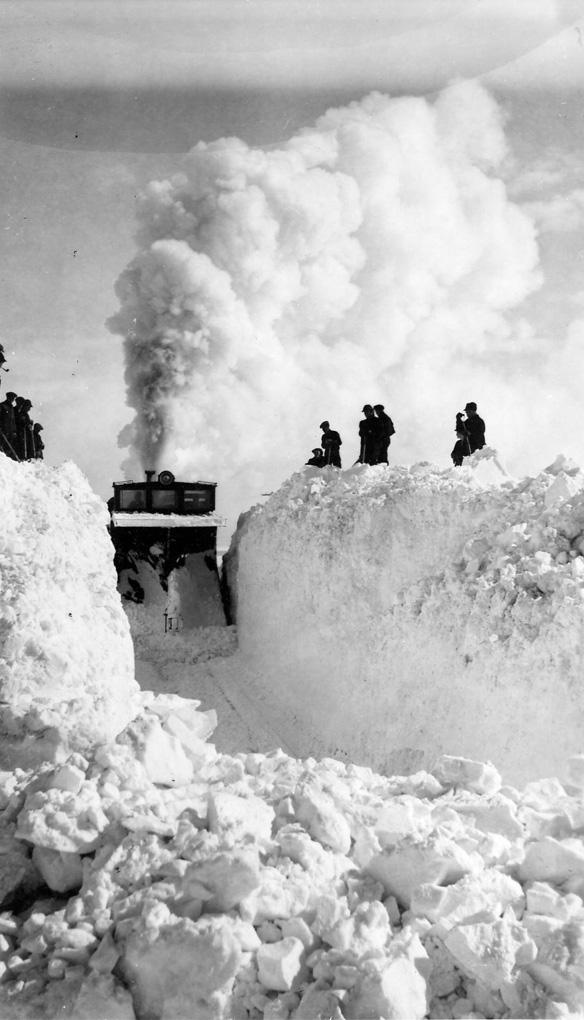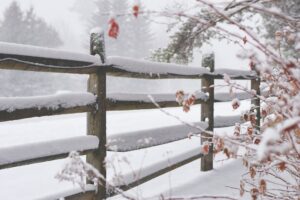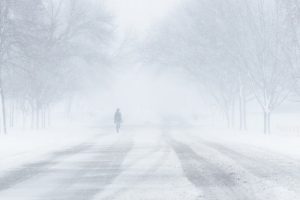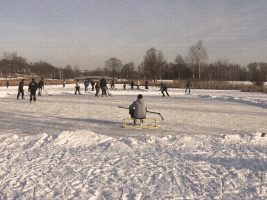By Michael Bartolf – Oxbow, Sask.
Recent weather events in the news has my memory drift back to a big storm we had in March 1947 at Oxbow, Sask.
It started on a beautiful, warm and thawing afternoon. Water was on the streets. It had been a rather mild winter, with us all thinking this is going to be the end of a rather short and mild winter.
Shortly before the bell was to ring dismissing the classes for the day, a knock came to our classroom door. The teacher walked out into the hallway.
Returning to the room, she closed the door and faced the class with a grim look on her face. She informed us that we were being dismissed early from class. We were to go straight home to tell our parents a severe storm was going to blow into town.
Winter had been mild
Walking home the nearly two miles in our shirt sleeves, we were greeted by our parent’s wonderment of being home so early from school on such a nice day.
We told our father the details of the impending storm which was to hit our area in a short time. He hitched up the team of horses and drove the sleigh to town for extra coal to carry us through a real storm. He was only able to get 500 pounds of fuel because the supply in town was getting low.
The winter had been quite mild on the whole, so all the horses–except those needed for chores and to travel to town–had been turned out to fend for themselves. When father came back into the yard, he was met by these horses. All were very anxious to receive extra shelter from the impending storm.
It was sometime before midnight the storm hit in full force from the southeast and blew from that direction for more than three days.
Snow blocked doors
It was impossible to keep the snow away from the only door on the east side of the house. We made an alternate way to get into and out of the house by the upper verandah door. A ladder reached the upper floor and was set up. A piece of the railing was removed so as to be able to reach the upper entrance.
There was a long inside stairway that assisted in getting to and from the upper floor. All the milk, skim milk water, and waste water were carried up and down the ladder as well as the stairway in the house.
We were very fortunate that we didn’t have any problems with the deep well freezing. It was located next to the barn and was our only water source. By navigating the snowdrifts, we were able to get to and from the barn with few problems throughout the storm.
Thankfully in three or four days, the wind changed into the northwesterly direction. The lower house doors were shovelled out and were usable again. We survived the week of storms with a minimum of hardship.
Reports of trains buried
The opening of school was called for the next Monday morning. Weather reports coming over the radio announced all schools were open again and it was the students’ problem to get there.
There were reports of trains buried in the snowdrifts all over the southern part of the province. The train service was at a standstill for more than a week. The CPR snowplow was buried in a snowbank, off the western edge of Oxbow for over three days awaiting the Main Line plow to come and rescue it from its cold and white grave.
In the centre of town, although it also received a considerable amount of snow, the draymen with their teams and sleighs were able to get around.
They were even able to take coal from the school basement to replenish the hospital supplies which were getting low. The school had the foresight to have put in a bigger supply a short time before the storm.
Thus with neighbour helping neighbour, Oxbow’s Storm of 1947, passed into history and so also my story of the March 1947 snowstorm in Oxbow, passes into the records.




